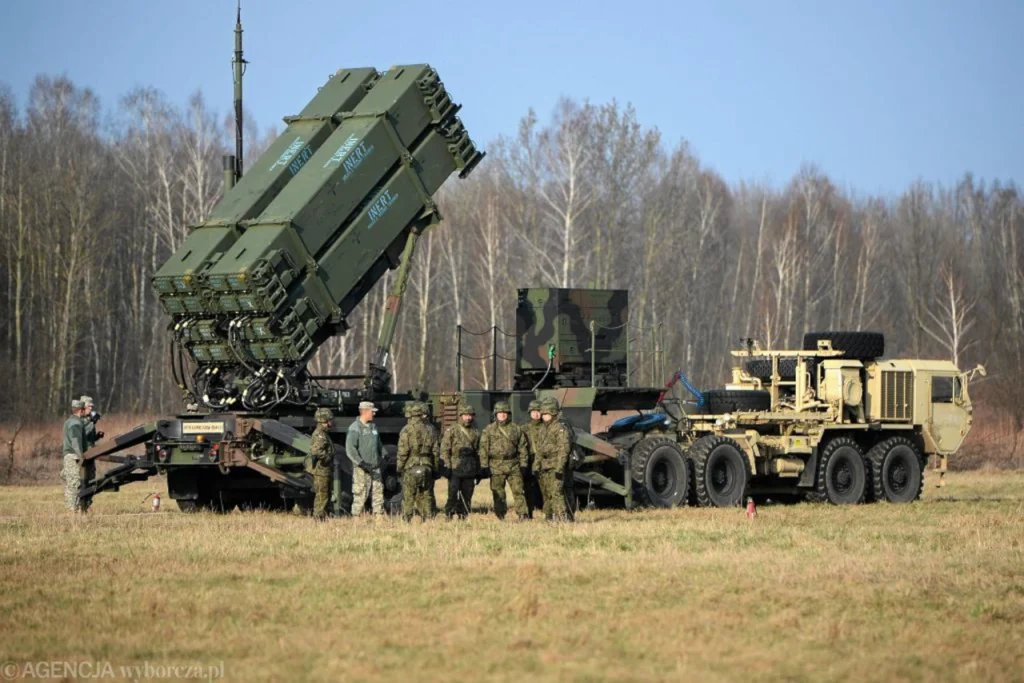There is a common belief that the American Patriot Air Defence System is the best in the world, has no equivalents, and constantly exceeds expectations. While others believe it is an average system. Nevertheless, its efficacy should be considered and recognised. As the U.S. is now offering the Patriot System to Ukraine, it is worthwhile to understand if the system can live up to its reputation against a formidable enemy Russia. American Patriot air defence systems and the Russian 9K720 Iskander are imminent to clash. Let’s hypothesise how they fare against each other with open-source data.
Patriot Air Defence System
The Patriot complex’s reputation is mixed. On the one hand, it had a successful performance in Iraq at the end of the conflict. On the other hand, there are occurrences in the history of the air defence system that can only be described as horrifying. Take, for instance, the incident where an Iranian drone was used to assault the Saudi Aramco plant. To defend the American complex, one could say that, in this instance, the system was forced to compete against targets against whom it was not designed to work in principle.
PATRIOT (short form for Phased Array Tracking Radar to Intercept on Target, previously called SAM D) is vital to U.S. air and missile defence. Both the system and its interceptors are costly and need more supply. About 90 soldiers make up a Patriot battery, the basic firing unit. However, only three soldiers are needed to run the battery at the engagement control station. Lockheed Martin makes interceptor missiles, and Raytheon Technologies makes Patriot radar and ground systems. Patriot will add to Ukraine’s layered medium- and short-range air defence systems like Stinger and the National Advanced Surface-to-Air Missile System (NASAMS). In a training course that is expected to last several months, about 90 to 100 Ukrainian soldiers are being taught how to operate, maintain, and support the defensive system.
The Patriot’s phase-array radar system is said to have a range of more than 150 kilometres (km) and the ability to track up to 100 targets and provide guidance information for up to nine missiles. Patriot interceptors have a flight ceiling of about 20 km and can protect an area of about 15 to 20 km from incoming ballistic missiles.
PAC-2 has a maximum speed of over 3,500 mph; it operates between 2.5 and 32 KM altitude and ranges about 96 KM. The warhead of PAC-2 is a standard high-explosive.

The PAC-3 range of 20 to 35 KM (against missiles) provides air defence against high-performance air-breathing and theatre ballistic missiles. A core Ballistic Missile Defense Organization (BMDO) system, PAC-3 is a point defence weapon that has some ability to defend against Short Range Ballistic Missiles (SRBM) and cruise missiles. The BMDO says that the PAC-3 is the most developed system in their arsenal. One of the most important things about the PAC-3 is that it is a hit-to-kill system, which critics often say is like shooting a bullet with another bullet.
Patriot’s inherent anti-tactical missile (ATM) capabilities were demonstrated with a standard production missile in September 1986. PATRIOT intercepted and deflected a LANCE missile emulating an SS-21 (Mach 5.3) using only software modifications to equipment on the ground.
In a test in November 1987, the Patriot Advanced Capability (PAC)-2 was able to shoot down another Patriot missile simulating an SS-23 ballistic missile. The SS-23 travels at a speed of Mach 9.
Patriot vs Iskander
The semi-ballistic 9M723 Iskander missile can move at an altitude of 50 KM and a speed of Mach 6–7 terminally. Theoretically, it could be shot down by PAC-2 or a PAC-3 at an altitude of about 2.5 to 20 KM. But the 9M723 missile can change direction while in flight, decreasing the likelihood that it will be destroyed in flight. The 9M723 can descend to a height of up to 70 metres (less than a kilometre) before it approaches the target, which makes it more difficult for the American missile defence systems to intercept the primary ballistic missile used by Russia. Not to mention that the cruise missiles of the Iskander, the 9M728 and 9M729, can travel at altitudes ranging from 7 to 60 metres, which is significantly lower than where American radars are active.
In addition, the Patriot is a good point defence weapon, but it can’t defend an area, and it can rain deadly debris on friendly territory, which is bad.
An Iskander or Kinzal missile could destroy the Patriot Air Defense system if it is not well camouflaged. Given this, the U.S. might consider giving Ukraine the PAC-3 system to protect a very important target.
Conclusion
Since the Patriot can’t hit even Soviet R-17 missiles with a 70–80% chance, it’s not a good bet that it will hit an Iskander missile, which flies differently and much faster and can take “countermeasures” if it needs to.
Iskander is not a Scud, which the U.S. and NATO call the R-17 missile. It’s very different from all the other Russian missiles that have been built before. It is very hard to stop, even with the SM-3 anti-missile system, the Aegis system, and other tools.
Based on several factors, such as trajectory and flight profile, hit accuracy, firing range, noise immunity, warheads used, etc., Iskander is a unique missile.

Well, so far is 100% interception rate against Kinzhal and Iskanders